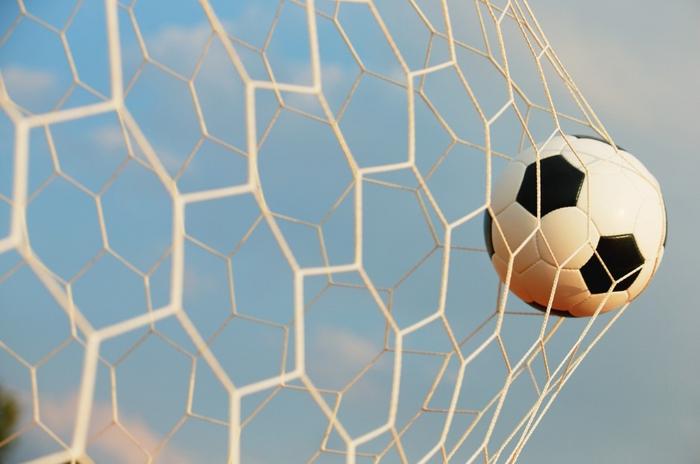A pioneering study emerging from the Faculty of Education and Sport in Álava delves into the intricacies of goalkeeper training in professional football, challenging conventional methods with a data-driven approach. Researchers at the University of the Basque Country (UPV/EHU) have undertaken the first-ever academic analysis that examines shots on goal from the goalkeeper’s perspective, aiming to optimize training regimes by reflecting the actual scenarios goalkeepers encounter during competitive play. This novel research is set to transform training paradigms worldwide by highlighting frequently overlooked dynamics.
Central to this groundbreaking work is a comprehensive statistical examination of 179 matches from Spain’s elite La Liga during the 2019-2020 season. The dataset encompasses an impressive 2,238 shots targeting 15 goalkeepers, a robust sample size that provides a nuanced picture of offensive patterns and defensive responses. The study meticulously observed sixteen specific variables, including shot direction, the body part employed by the shooter, the distance and location of the shot, and the goalkeeper’s reactions. This deep dive permitted the formulation of training adaptations tailored to high-probability game situations.
One of the study’s standout findings relates to shots executed with the first touch. Approximately 75% of goals stem from such rapid first-touch shots, which leave goalkeepers with scant reaction time. These attempts are characterized by their speed and unpredictability, often catching goalkeepers off-guard before they can position themselves or prepare their bodies adequately. The research team advocates for dedicated training sessions focused on replicating the high-velocity nature of these shots, effectively preparing goalkeepers for the most prevalent threats they face.
In addition to first-touch shots, an equally critical challenge for goalkeepers involves deflected attempts. Such shots involve a change in trajectory induced by contact with another player, rendering the ball’s path erratic and difficult to anticipate. By analyzing these complex scenarios, the study reveals that goalkeepers often struggle with decision-making and timing, as the altered trajectory disrupts conventional predictive cues. To counteract this, the researchers recommend specialized drills to cultivate rapid reflexes and adaptable responses to sudden shot deviations.
Beyond the micro-scale shot analysis, the study also integrates macro-level strategic insights by correlating shot characteristics with final league positions. By comparing shot tendencies among top-ranking teams to those of other competitors, the researchers identified distinct offensive behaviors. Specifically, teams finishing higher in the league table tend to rely more on sustained ball possession with numerous touches before shooting, minimizing opportunistic set piece attempts and crosses. This nuanced understanding equips goalkeepers with opponent-specific intelligence, arguably providing a competitive edge ahead of matches against elite squads.
The integration of such data-informed insights into goalkeeper training not only refines individual skills but also enhances tactical preparedness. Goalkeepers, often the last line of defense, can now tailor their conditioning and mental training according to empirical evidence, focusing on the scenarios they will most likely encounter. This shift from anecdotal to scientific guidance anchors athletic development in measurable performance variables, aligning training programs closer to game realities.
Moreover, the researchers emphasize the necessity to extend these investigative methods across diverse leagues and playing conditions. The influence of environmental factors such as pitch wetness or dryness has yet to be thoroughly quantified but is believed to alter gameplay dynamics significantly. Such considerations could lead to adaptive training that considers climatic and surface conditions, further personalizing the goalkeeper’s preparation for different competition contexts.
At the heart of this study is Markel Perez-Arroniz, a doctoral candidate in the Department of Physical Education and Sport at UPV/EHU. His rigorous academic journey, preceded by a degree in Physical Activity and Sport Sciences, lends profound expertise to the project. Perez’s work is supervised by notable figures Asier Zubillaga-Zubiaga and Julio Calleja-Gonzalez, both of whom specialize in elite sports physiology and training sciences. Their combined guidance ensures the research maintains a high standard of scientific inquiry, bridging sport science and practical application.
This research signifies a paradigm shift in goalkeeper training by embracing an evidence-based approach to athletic preparation. By keenly analyzing shot types and goalkeeper responses, the study provides invaluable insights for coaching methodologies, fostering improved reaction times, positioning, and decision-making under pressure. Such advancements promise to elevate goalkeeper performance, potentially redefining the goalkeeper’s role in modern football strategy.
The scholarly article titled “Shooting and goalkeepers response analysis in a professional football league” is set for publication in the esteemed journal Apunts Sports Medicine and will be available officially from January 28, 2025. Its dissemination within the scientific and sporting communities is expected to stimulate further research in various football leagues globally, extending its impact beyond the Spanish context.
Through these multifaceted findings, the study confirms that effective goalkeeper training must mimic the actual competitive environment, moving away from generic drills toward adaptive, scenario-based training. This calibrated focus equips goalkeepers to manage the unpredictability inherent in football, improving their capacity to respond to both expected and unforeseen shots during matches.
Furthermore, the collaboration between academic researchers and professional coaching staff, such as those from SD Eibar, illustrates the vital link between theoretical research and practical implementation. This synergy ensures that the scientific insights gleaned do not remain confined to academic circles but actively inform training curricula, advancing the sport at grassroots and elite levels alike.
Looking forward, the researchers advocate for the inclusion of diverse datasets encompassing different leagues, player skill levels, and environmental variables. Such comprehensive research agendas will undoubtedly contribute to the refinement of goalkeeper training worldwide, enhancing athlete readiness and competitive outcomes across the sport.
Subject of Research: Goalkeeper training optimization through statistical analysis of shot types and goalkeeper responses in professional football.
Article Title: Shooting and goalkeepers response analysis in a professional football league
News Publication Date: 28-Jan-2025
Web References:
https://www.sciencedirect.com/science/article/pii/S2666506925000045?via%3Dihub
References:
Markel Perez-Arroniz, Julio Calleja-González, Jon Zabala-Lili, Arkaitz Crespo, Asier Zubillaga
Shooting and goalkeepers response analysis in a professional football league, Apunts Sports Medicine, DOI: 10.1016/j.apunsm.2025.100480
Image Credits: Photo: Archivo.UPV/EHU (Image: Canva)
Keywords: Sports, Statistical analysis, Medical research facilities, Education research, Social studies of science, Observational studies




